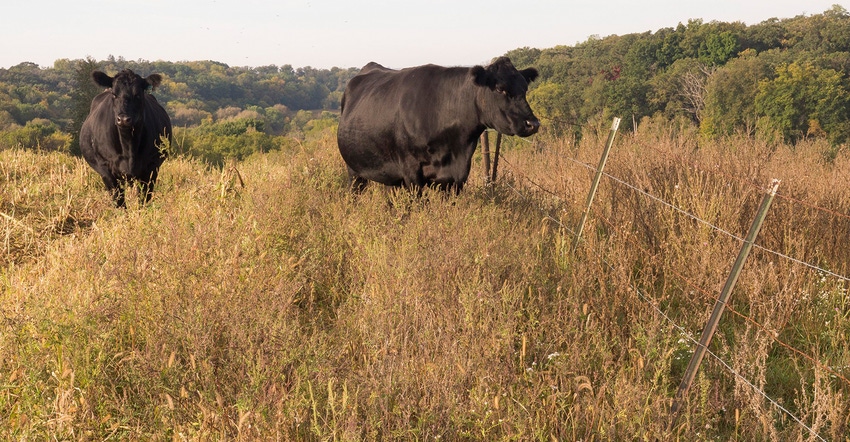November 20, 2018

By Ashley Olson
Winter is coming, with its white ground and freezing temperatures, as I look out toward the cattle barn from my warm living room. During this time, it is important to consider the winter beef cow ration fed to your dry cows so they are in top body condition and health at calving time. Calving season is just a couple of months away, depending on when your operation starts spring calving.
Body condition
Optimal body condition at calving is 5 to 6 on a scale from 1 to 9. The dry period and middle third of lactation are the easier and least costly times to add condition to the cow. Ideally, cows should gain 1.5 pounds per day, or 0.5 to 0.75 point of body condition score per month. Generally, a cow eats 2% to 2.5% of her body weight in dry matter each day. It is important to note that temperature plays a large role in a cow’s nutritional needs.
To have the most optimal and cost-effective ration, it is crucial to test your forages so you know what nutrient values you have to work with and if feed supplements are necessary. Work with your nutritionist for ration balancing. With hay prices higher this season and other feedstuffs cheaper, this may be the year to consider substituting corn or other coproducts to your winter cow ration, especially if you are short on hay.
If you’re thinking of substituting corn into the diet, a rule of thumb is to feed the cow at least 1 pound of hay per 100 pounds of body weight. For the remainder of hay, use the 1 pound of corn to 2 pounds of hay substitution guideline. Cows will act less hungry if they get fed 10 to 15 pounds of hay compared to reducing it more. To help determine if this is could be a cost-saving measure, use the Hay-Corn Substitution Calculator for Beef Cow Winter Rations found on the University of Wisconsin-Extension Wisconsin Beef Information Center website, under the Decision Tools and Software tab.
There are other tools for evaluating feeds and rations under this tab, as well. Remember, the output is only as good as the information entered, and cow response to intake and feed can vary.
There are other factors to keep in mind during winter feeding. Things to consider include adequate bunk space of 26 to 30 inches per cow and water consumption. Decreased water consumption due to an iced-over stock tank can decrease feed intake. Also make sure hay waste is kept to a minimum with proper feeding equipment in the cow yard or barn.
In summary, a balanced ration will help get your beef cows through winter and be at optimum body condition and health during calving season. For more information about the beef industry, visit the Wisconsin Beef Information Center website, or contact your local Extension office.
Olson is the Extension agriculture educator in Vernon County, Wis. This column is provided by the University of Wisconsin-Extension’s Wisconsin Beef Information Center.
You May Also Like




